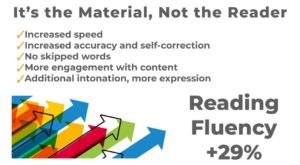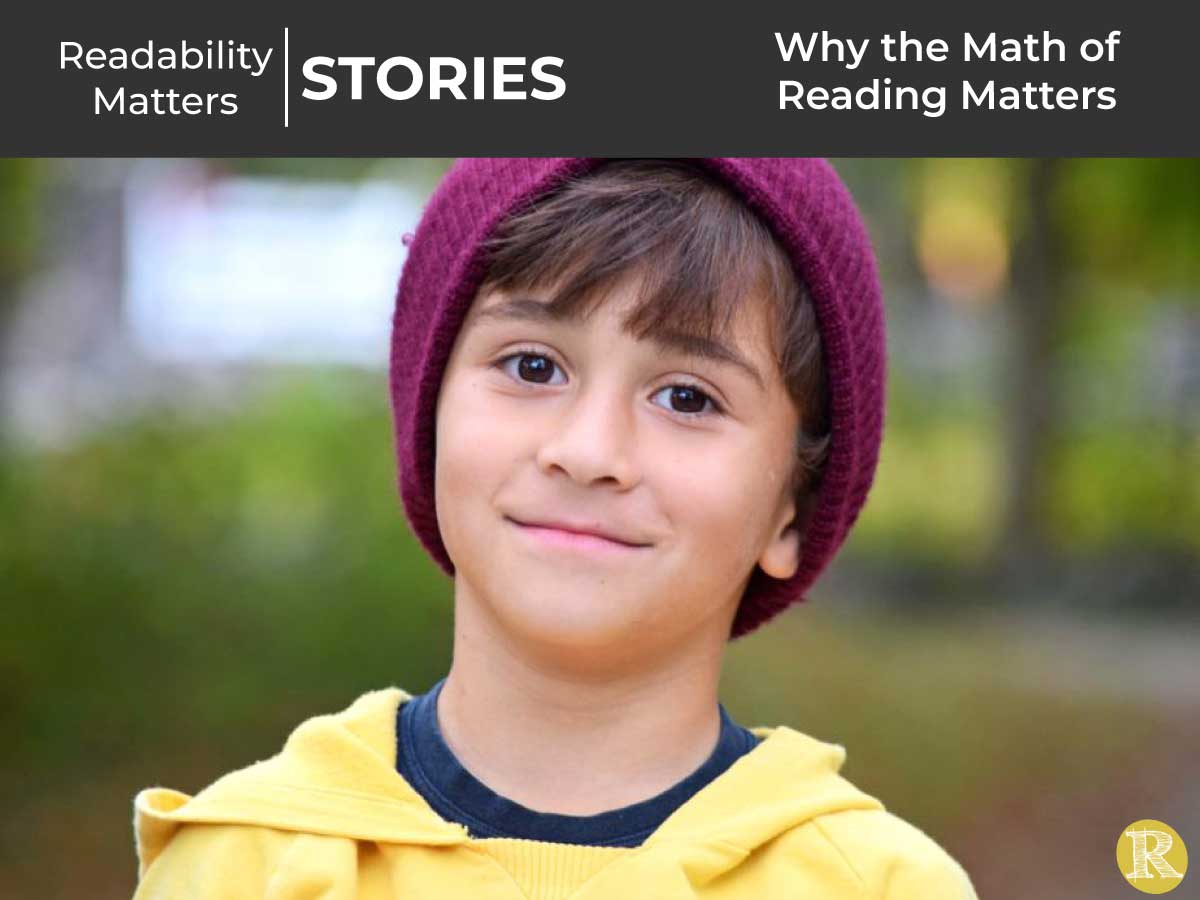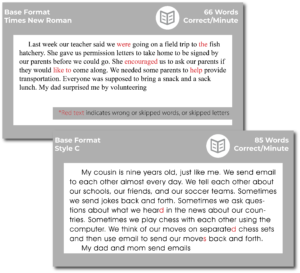Reading with Personalized Reading Formats Improves Fluency
What if you could improve a student’s reading proficiency by making small adjustments to text format? For Henry, that is exactly what happened.
Educators apply mathematically based assessments to determine reading proficiency. In simple terms, the reading fluency measure is based on counting the words read in a minute, subtracting errors, and recording the words correct per minute (WCPM) read. This measure can be used to compare changes in reading proficiency achieved with different text formats.
Henry’s 3rd-grade teacher contacted Readability Matters to discuss his reading. She described Henry as bright, articulate, and capable of understanding material well beyond his grade level. The problem, she said, was with his reading fluency.
“Reading fluency refers to the ability of readers to read the words in text effortlessly and efficiently (automaticity) with meaningful expression that enhances the meaning of the text (prosody). Fluency takes phonics or word recognition to the next level. While many readers can decode words accurately, they may not be fluent or automatic in their word recognition. These readers tend to expend too much of their limited mental energy on figuring out the pronunciation and meaning of words, energy that is taken away from that more important task in reading comprehension — getting to the text’s overall meaning. Thus, the lack of fluency often results in poor comprehension.
Fluent readers, on the other hand, are able to read words accurately and effortlessly. They recognize words and phrases instantly on sight. A minimal amount of cognitive energy is expended in decoding the words. This means, then, that the maximum amount of a reader’s cognitive energy can be directed to the all-important task of making sense of the text.”
– Timothy Rasinski, Defining Fluency
We visited Henry at school and spent time listening to him read. We had him read us a set of stories, all carefully leveled for mid-third-grade readers. We presented the first story with text formated as found in 3rd-grade textbooks. As he moved through the stories, the text format changed. For the second format, Henry read with a sans serif font. This was followed by 3 additional formats, which included this new font and additional character spacing and, in some cases, also included character expansion.
Then came the math. Henry read 66 words correct per minute using his textbook format. Consistent with his teacher’s observations, he made many significant errors as he read.
Assessing the readings, we found that format C was the format that Henry read best with. This format was based on a clean round font, AvantGarde, with additional character spacing added, and character expansion applied. Not only did Henry read more words, but he also read with fewer errors, less significant errors, and more expression.
As we finished the story, Henry stopped us. He thought that these kids had it all wrong… Rather than play text by email, they should be using facetime, he explained. While reading more quickly and accurately, he was clearly engaged with the content and comprehending well.
More math: Henry’s reading fluency improved 29% with the simple changes to his text format.

Imagine a World of Personalized Reading Formats
This story is not unique to Henry. Research demonstrates strong readers and struggling readers, adults and children, all have the potential to experience improved reading outcomes using a technology-enabled model of reading with personalized text formats.
Readability Matters is working hard to bring this significant opportunity into the classroom and to all readers, empowering everyone everywhere to achieve more.
Learn More
- Read Fluency: The Canary in the Reading Coal Mine to learn more about why being a fluent reader is critical to educational success.
- Read Increase Readability, Reduce Cognitive Load: Freeing Working Memory for Processing Meaning for more on how readability affects cognitive load, fluency, and comprehension.





